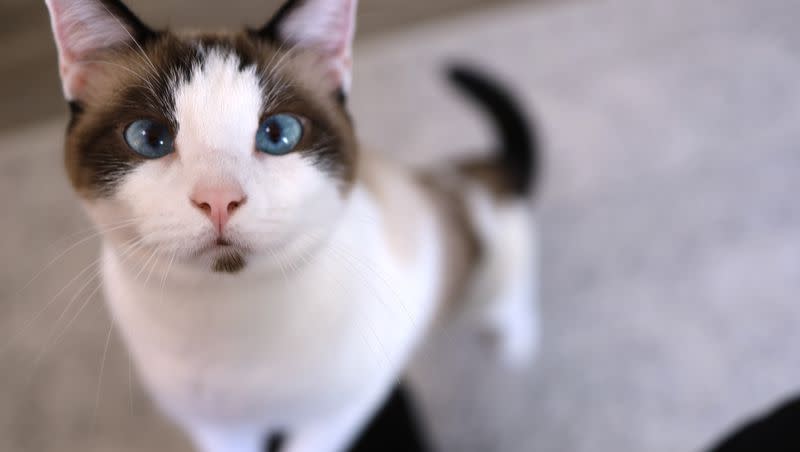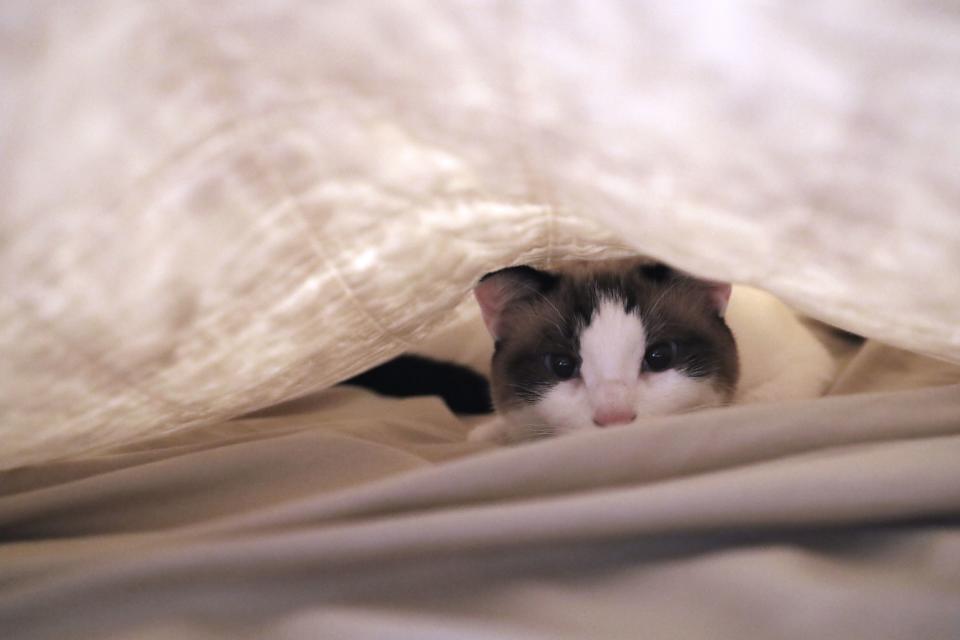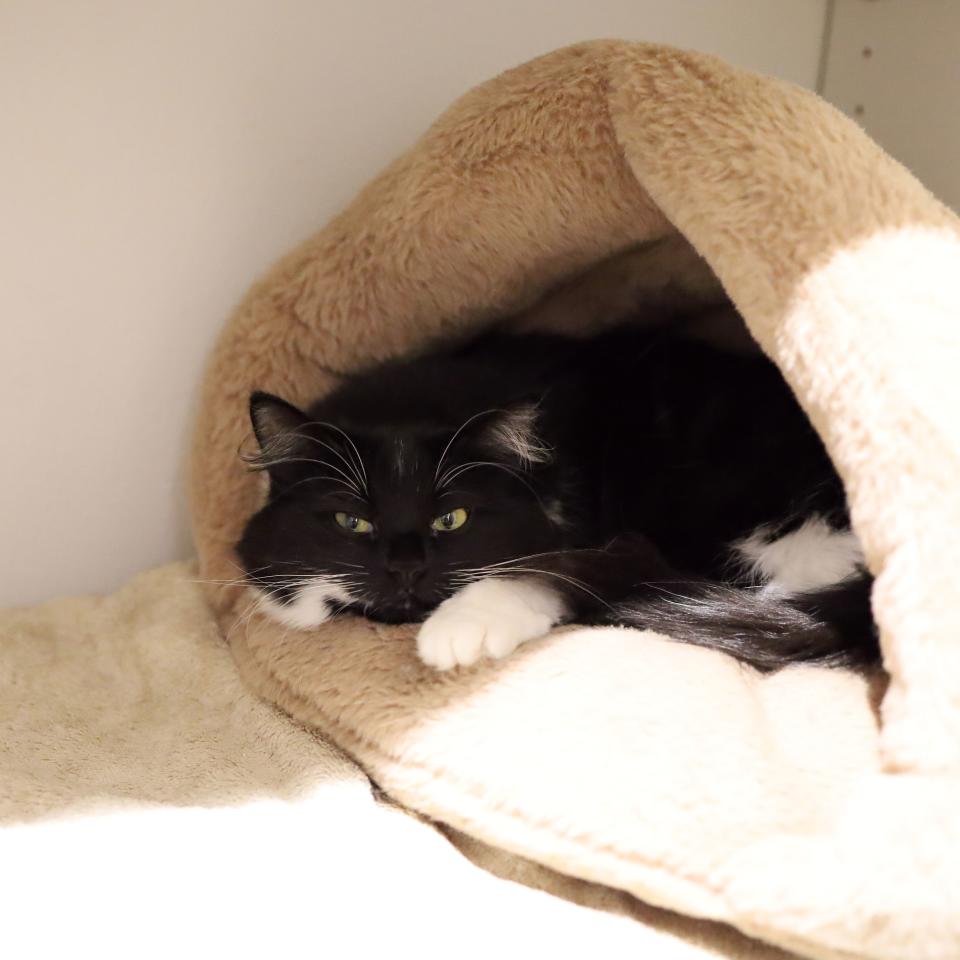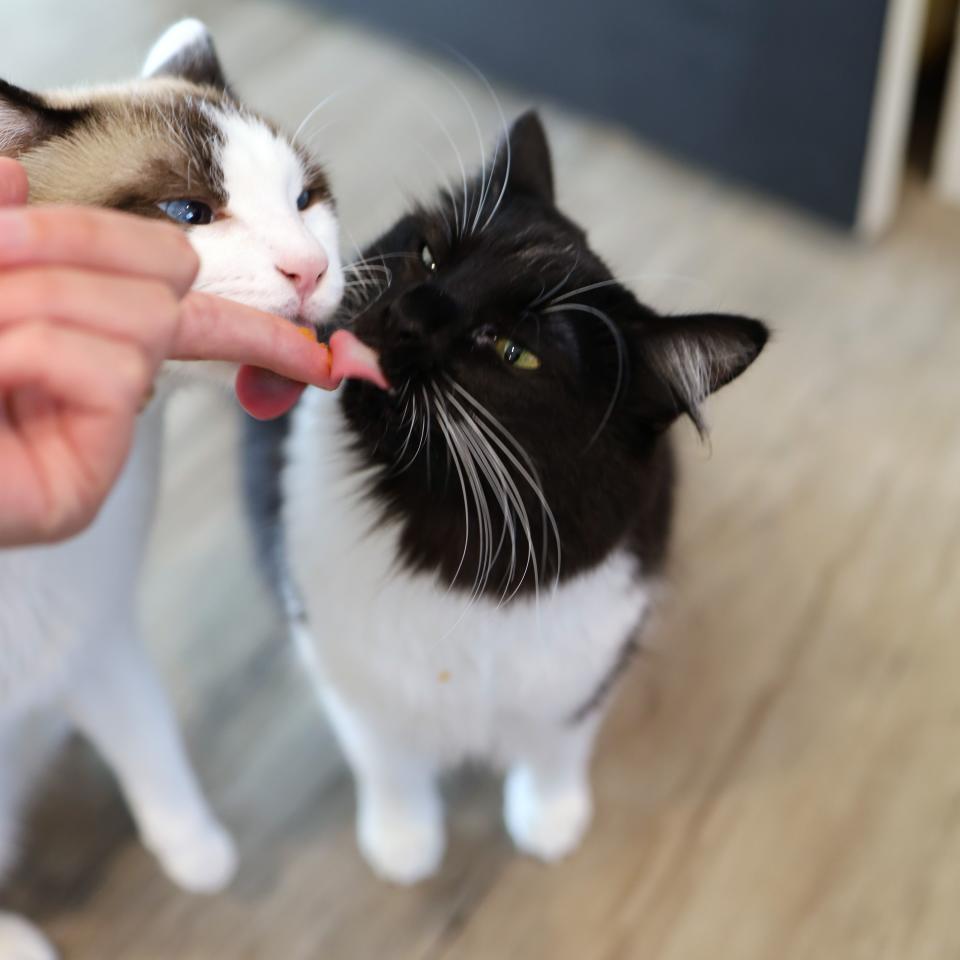Your cat could be suffering from anxiety. Here’s how to help

If you think cats are aloof, unaffectionate pets, you’ve most likely never owned a cat.
And you’ve definitely never met my cat.
If I walk out of a room, my cat — even if he is fully asleep — will be sitting casually at my feet within seconds in the next room. If he can’t find me, he meows, wandering from room to room until he does.
There is one exception to my cat’s clinginess. Whenever we have company over, my cat’s second anxiety manifests: His fear of strangers. Instead of shadowing me around the house, my cat will sit in the doorway of our bedroom — so he can still see my husband and me in the living room with company — and meow until one of us comes into our room with him. If he gets too anxious, he will burrow between the blankets on our bed, becoming a comedically conspicuous moving lump of quilt.

At what point should this cute clingy cat behavior become a point of concern about a pet’s anxiety levels?
Symptoms of anxiety in cats
According to PetMD, cat anxiety is usually a result of experiences in the first year of a cat’s life and may further develop between 1 and 3 years old. Therefore, the best time to treat cat anxiety is early on in their life before negative experiences compound.
Banfield Pet Hospital lists the following as signs of cat anxiety:
Pooping or peeing outside the litter box.
Destructive behavior.
New appetite changes.
Hiding, pacing or crouching defensively.
Aggressive behavior.
Overly clingy behavior.
Meowing way more than usual.
Coat changes from not grooming or bald patches from overgrooming.
Vomiting or diarrhea.
New physical habits: shaking their head, twitching their back skin or rapidly licking their nose.
While these symptoms could indicate anxiety, it is also important to know your cat before jumping to conclusions. For example, some breeds of cats are more vocal than others: Siamese cats are known to be very talkative, so “meowing more” may not be a good indicator of anxiety for them.
Related
How to calm your cat’s anxiety
“Behavioral problems in companion animals are among the main causes of abandonment,” researchers state in a 2020 research article on separation anxiety in cats. Cats who are abandoned or rehomed by their bonded human often show signs of worsened anxiety. Instead of giving up on your pet, these methods can help them calm down.
Make changes gradual. Cats are often overwhelmed with change. If you are introducing a new pet, moving homes or even moving their litter box or food bowls, take it a little bit at a time so that cats can adjust before adding more. For example, if you move to a new house, start by keeping your cat and all of their things in one room and gradually expand as they become comfortable.
Surround your cat with their favorite things. Especially if you are moving your cat to a new environment they aren’t familiar with, surrounding them with their favorite toys, bed, scratching post and other objects with their scent can help them adjust to the change more gradually. Do not use essential oil diffusers to calm your cat, as some oils are toxic to cats.
Spend time with your cat during anxiety-inducing situations. The 2020 study found that “on average, cats displayed a lower frequency of stress-related behaviors when the owner was present” because cats view their owner as a “secure base.” Thus, simply being present with your cat during a stressful situation can reduce their anxiety.
Provide alternative behaviors to boost your cat’s mental health. If your cat is engaging in negative behaviors because of stress, Zoetis Pet Care advises owners to give their cats opportunities to play, hunt and engage in social interaction that can distract them from anxiety and meet their instinctual needs.
Make a cat fortress. Banfield Pet Hospital suggests that owners can “provide a cozy cat place — maybe up high, like a cat tree, perch, or nook — that is entirely their own” where cats can retreat when anxious or frightened to feel safe. Enter: My second cat. While we have the aforementioned clingy cat, we also have another cat who used to get very anxious — until we gave her a shelf in our closet for a kitty cave. She knows that when we have people over or there are loud noises, she can go there and relax. Instead of forcing anxious cats to socialize with strangers — which often backfires and reinforces their fear — owners should allow them to retreat to a safe place to reduce anxiety.

When is it time to see the vet about your cat’s anxiety?
If left untreated, cat anxiety can lead to more serious health problems that will require medical care. Cats can develop urinary tract infections, weakened immune system, pica, weight loss and other health issues.
Banfield Pet Hospital says owners should take their cat to the vet if their cat hasn’t had food or water for 24 hours, hasn’t gone to the litter box for 24 hours, is straining and making pained sounds in the litter box, is breathing quickly or struggling to breathe or if their third eyelid is covering their eye.
In some cases, the vet may recommend medication to reduce your cat’s anxiety. which reduces stress by altering a cat’s brain chemistry. “The primary goal is for your cat to be calm and happy, not to turn them into a zombie or change their personality,” says PetMD. Medication can last for a few months or a few years depending on what your vet recommends.
Cats have a huge impact on the mental wellbeing of their owners. In a poll released in March by the American Psychological Association, 86% of pet owners polled said their pets have positively impacted their mental health. Cat owners were even more likely than dog owners to report that cats “offer companionship, provide a calming presence and help reduce stress and anxiety.” We need to return the favor by being more attentive pet owners: Learning our cat’s distress cues, responding with anxiety-reduction methods and seeking veterinary care if our cat’s health is at risk.


